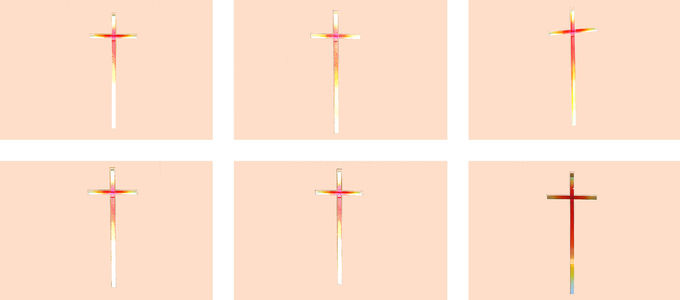
Just imagine there was this religious community that would gather regularly around a rack. The focus of their devotions would be an electric chair. And whips would hang from the walls of their place of worship.
Who among us would not have serious doubts about the mental health of such a religion’s devotees? The reaction would probably be similar for people of Jesus’ time if they were to set foot into a modern Christian church and see themselves confronted by a cross towering over everything else.
A weapon of terror
King Herod “The Great” had died. The Roman treasurer Sabinus had just plundered the temple treasure. And in the year 4 BC, riots began to break out. Governor Varus made short work of them, however. He made his way through Jerusalem with two legions of soldiers—and had two thousand Jews crucified in the process.
Things were even worse in AD 70, however: Procurator Gessius Florus had ravaged the temple treasury, provoking an insurrection of Jewish Zealots. But the state power was quick to respond: a million people died in the conquest of Jerusalem by the later Emperor Titus. The city was surrounded by a veritable forest of crosses. Every day, the Romans would crucify 500 people or more. It wasn’t long before the timber ran out.
Every breath a torment
The point was for victims to expire as slowly and as painfully as possible—their arms and legs affixed to a vertical post with a horizontal crossbeam. Nails were driven into the wrist or forearm between the radial bone and the ulna, sometimes dislocating the palms toward the wood. The feet were frequently nailed to the post through the calcaneus, or heel bone.
The metal in the limbs played havoc with the nerves. The heaving and sinking of each breath would send new waves of pain surging through the body. The weight of one’s own body would cause shortness of breath and fits of near suffocation. The victim would suffer from cramps, gangrene, episodes of fever, and accumulations of fluid in the thoracic and abdominal cavities.
Any promise of relief merely served to prolong the agony. The sponge soaked in water or vinegar only prevented a premature death by dehydration. The small foot support on which the victim could rest his weight merely prevented him from suffocating prematurely.
The opposite of death
And what do we, as Christians, see here and now in this cross? Not ruin and calamity, but salvation. Not an instrument of execution, but an eternally immutable symbol of a higher justice: the turning point in world history, the victory of the humble, the conquest of death, the hope of eternal life, and the love of God, who would give anything to save every single human being who has ever lived.
When has a symbol ever changed its meaning to such a degree in human history? This only goes to show the magnitude of the victory that Jesus Christ has achieved on the cross. He has turned this monument of torment and suffering into a symbol of love and hope. And this was already clear from His last words on the cross.
From lament to praise
“My God, My God, why have You forsaken Me?” No, this is not the cry of ultimate abandonment by God. It is the start of Psalm 22, which begins as a hymn of lament, and changes to a hymn of praise: “In the midst of the assembly I will praise You.”
This also gives us a hope that already applies today: with humbleness and trust in God, even the greatest defeat can be transformed into a victory, even if on a completely different level than expected.
Photo: The glass cross in the congregation of Dessau, Germany, which changes colour depending on the position of the sun (photo: Oliver Rütten)




